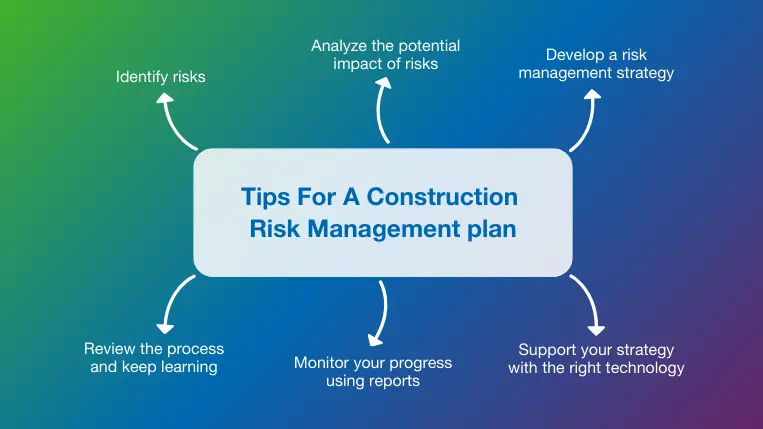The Undeniable Importance of Risk Management in Safeguarding Organizational Success
The Undeniable Importance of Risk Management in Safeguarding Organizational Success
Blog Article
The Critical Relevance of Risk Management in Getting Organizational Goals
In the swiftly developing service landscape, the capacity to navigate unpredictability has come to be an essential. This is where Risk Management actions in, providing an organized approach to recognizing, examining, and mitigating prospective obstructions to progress. It's greater than simply a safety step - it's a critical device, fostering strength and advancement. As we discover the crucial duty of Risk Management in accomplishing organizational goals, one can't question yet assist: how does this translate right into real-world success?
Recognizing the Principle of Risk Management in Service

The Essential Function of Risk Management in Strategic Planning
Integrating Risk Management right into tactical planning functions as a safeguard for companies, securing their long-lasting plans with a solid structure of preparedness and strength. It runs as the organization's radar, detecting possible threats and susceptabilities that can interfere with the path towards accomplishing their mentioned purposes. Risk Management provides a framework for anticipating unpredictabilities and designing ideal reactions, guaranteeing the company's survival and success also despite misfortune. By incorporating Risk Management right into calculated preparation, companies can change these unpredictabilities into possibilities for development and technology. This strategic interweaving of Risk Management promotes versatility, making organizations extra robust and enabling them to navigate the ever-changing company landscape with confidence. Consequently, Risk Management ends up being a vital tool in critical planning, important in protecting lasting success.

Methods for Identifying, Assessing, and Prioritizing Dangers
Navigating the facility landscape of risks calls for the application of details methods for their evaluation, identification, and prioritization. The process starts with Risk identification, utilizing devices such as SWOT analysis, which assists in pinpointing possible risks and opportunities. Next off, Risk evaluation is performed to establish the possible effect and likelihood of each Risk. Devices such as Risk matrices and impact-probability charts are utilized for this. Ultimately, threats are focused on based on their possible impact and chance, allowing organizations to concentrate their resources on high-priority threats. This methodical method guarantees a detailed understanding of the Risk landscape, enabling organizations to make educated decisions and effectively take care of threats to accomplish their objectives - importance of risk management.
Securing Organizational Workflow With Reliable Risk Management
In the business landscape laden with uncertainties, efficient Risk Management plays an essential duty in protecting business procedures. It serves as a protective guard, minimizing the adverse impacts of prospective risks and making sure the smooth functioning of all processes. By determining and examining prospective risks, Risk Management makes it possible for companies to develop durable contingency plans. visit our website This preventive approach aids in preserving operational stability, even when confronted with unexpected circumstances. In essence, Risk Management is the lifeline that keeps the business procedures afloat amidst turbulent waters. It ensures not just the survival however the lasting development of an organization, making it a crucial device in achieving company goals. Therefore, organizations should spend in comprehensive Risk Management techniques to guard their operations.

Converting Potential Hazards to Opportunities: The Power of Risk Management
An aggressive method to risk Management includes identifying, examining, and focusing on threats to design approaches that transform them right into prospective benefits. Thus, by leveraging the power of Risk Management, organizations can not only protect their procedures however likewise stimulate growth and accomplish their objectives in an unpredictable organization atmosphere.
Case Studies: Success Stories of Risk Management Driving Organization Objectives
Successful execution of Risk Management approaches has actually generated impressive outcomes in get redirected here numerous organizations, underscoring the benefits of this approach. Multinational companies like Microsoft and Google, as an example, have leveraged Risk Management to decrease threats and exploit possibilities, driving their organization purposes ahead. Microsoft's positive Risk Management technique helped it pivot swiftly throughout the 2020 pandemic, transitioning to remote job smoothly, thereby maintaining productivity. Google, by assessing and mitigating possible dangers in its cloud-based solutions, has actually guaranteed continuous service, therefore enhancing customer trust fund. These examples illustrate just how effective Risk Management can not just steer businesses free from potential challenges however also lead them towards their calculated goals. Thus, Risk Management is indispensable to the quest of business goals.
Verdict
In final thought, Risk Management is essentially critical in achieving business objectives. By including Risk Management into calculated preparation, services can much better browse unpredictabilities, safeguard operations, and capitalise on chances, therefore aligning with long-term objectives.
At its core, Risk Management is the procedure of identifying, evaluating, and dealing with possible hazards that can negatively affect an organization's objectives use this link or procedures. Next, Risk analysis is carried out to determine the prospective impact and likelihood of each Risk. Dangers are prioritized based on their possible influence and probability, enabling companies to concentrate their resources on high-priority threats. By determining and assessing possible risks, Risk Management allows organizations to develop robust contingency strategies. A proactive technique to take the chance of Management includes identifying, analyzing, and prioritizing threats to design methods that transform them into potential advantages.
Report this page